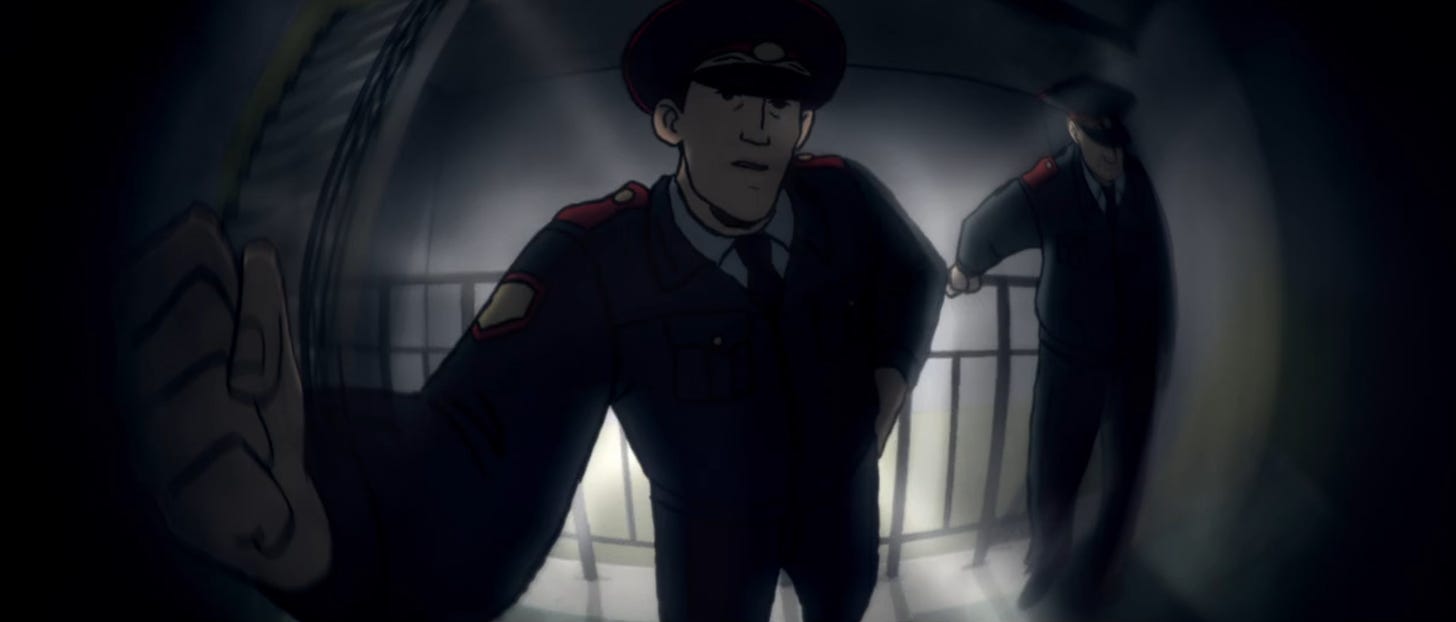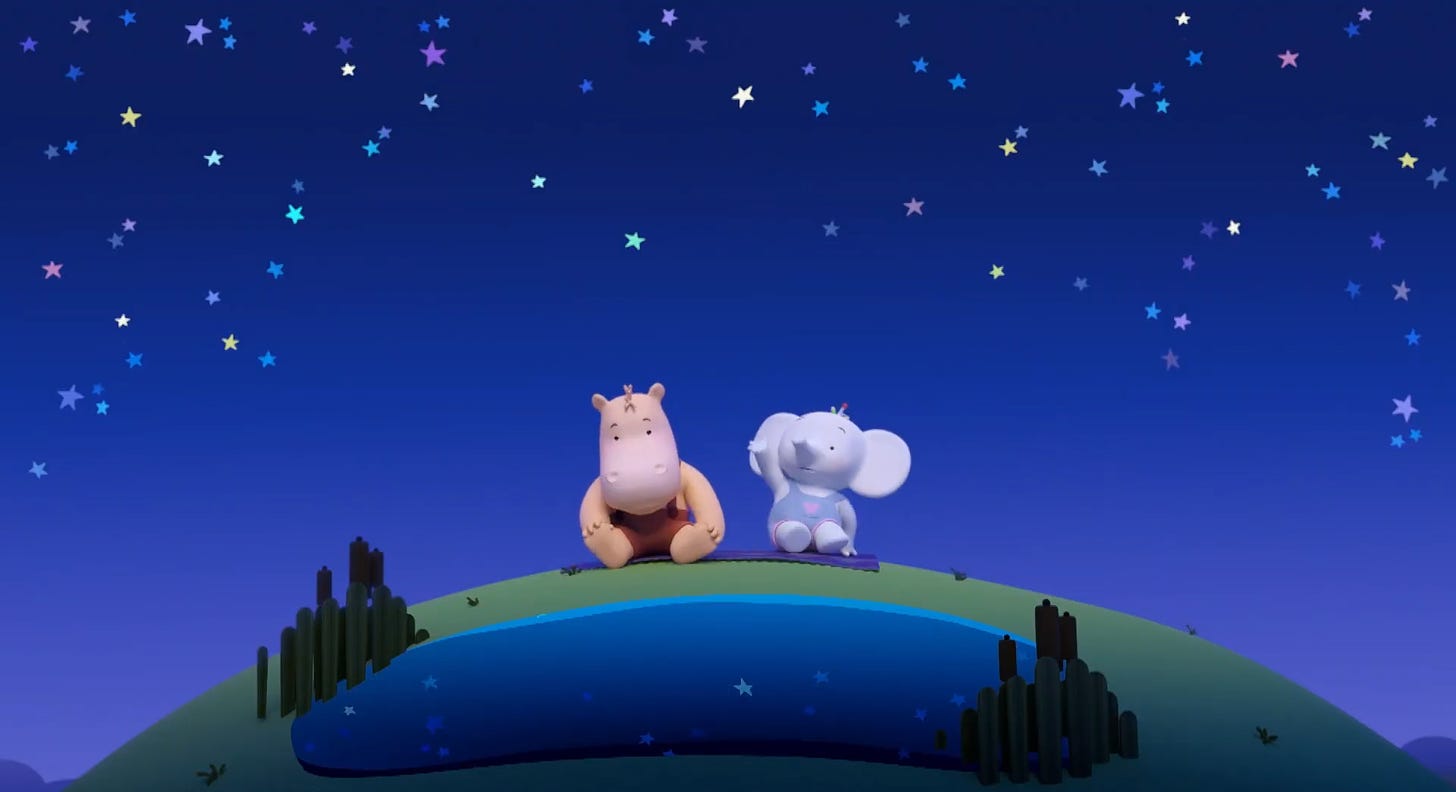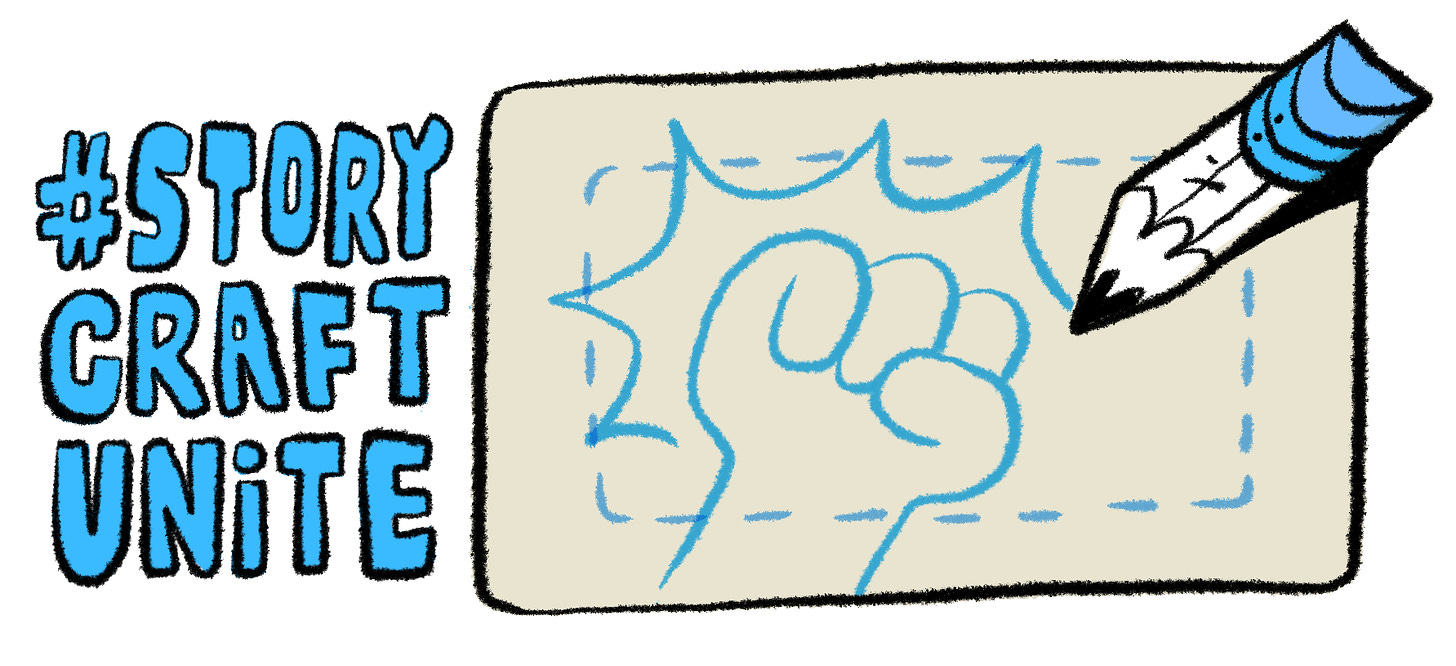The End of Russian Animation as We Know It
Animators fight for their rights, Russian animation implodes — and more.
Welcome! We’re back with another issue of the Animation Obsessive newsletter. Here’s what we’re doing today:
1 — how Ukraine and unions are changing the animation landscape.
2 — newsbits from around the world.
3 — the last word.
New around here? You can sign up to receive our Sunday issues in your inbox every week, for free:
Now, here we go.
1. Animation shakes up globally
A lot has changed since our last update. This has been an unbelievable week in animation — so little time has passed, yet everything is different. We’re exploring what’s happened through three in-depth stories.
The week’s biggest shifts stem from the ongoing Russian invasion of Ukraine. Animators worldwide have united to support Ukraine’s defense effort, putting together charities, releasing bold messages and boycotting the Russian film industry.
These boycotts are helping to cause the devastation of Russian animation. Artists, filmmakers, businesses and organizations are tightening one more screw into the Russian government, hoping to convince Putin to abandon his war. It’s a necessary move, but it also comes at a human cost, as we detail.
Lastly, America’s animation union movement is gaining major steam. Union talk this week reached a fever pitch, as people shared their stories and raised awareness of the need for change in the animation industry. Plus, there’s a new union in town. All of that and more, below.
Animators and artists rally around Ukraine
Since February 24, when Russia’s war began, the world has risen up in solidarity with Ukraine. That includes the animation field — and filmmakers more broadly.
A group of animators in Korea published an open letter opposing the war. “Though we are but ordinary people, we can’t be still while we are aware of the tragedy that is unfolding in Ukraine,” they wrote. The legendary Ghibli artist Nizo Yamamoto (Grave of the Fireflies) has also spoken out and revealed plans to donate, possibly through an art auction, to Ukrainian relief.
Even in Belarus, filmmakers and animators issued a statement to praise Ukraine and condemn Russian and Belarusian aggression. “We demand Russian troops to leave the territory of Ukraine and Belarus,” it reads. “We demand to stop the war immediately.”
Then we have the fundraising and awareness-building. The International Coalition for Filmmakers at Risk has created a relief fund open to donations. In Hungary, the Művész Cinema in Budapest is holding a special screening of Flee on March 10 — all ticket sales will go to aid Ukrainian refugees. Meanwhile, the anti-war short Mila has been donated as a free broadcast to any TV channel in the world. Its creators write:
We all agreed that in this very challenging […] time, it is important that Mila’s message of hope be distributed to as many nations as possible. We hope to help children facing this tragedy understand that they are not alone, and to remind adults who may be far removed from the violence, what’s at stake.
Animators worldwide are already creating new work in support of Ukraine, too.
On February 28, the Linoleum Festival in Kyiv called on artists to submit animation about the conflict, up to 10 seconds in length. Separately, a group of Russian animators is releasing anti-war protest shorts. They’ve stated through ASIFA that there is “no way to justify this terror the war has brought to peaceful Ukrainian people on our behalf.”
Russian animation goes to hell
Alongside the relief and support toward Ukraine, there’s also the fight to stop Russia in its tracks through economic means. We’re already seeing the effects.
Since we began covering global news in early 2021, the growth of animation in Russia has been a huge trend. After decades of economic squalor following the fall of the Soviet Union, Russia’s animation scene has reemerged in recent years as a contender, powered by Kremlin money.
All of that has changed since February 24.
It’s hard to overstate how bad things look for the Russian film and TV business. Much of the crisis stems from general economic sanctions, which have dropped the ruble to historic lows. But don’t underestimate the boycotts, which affect Russia on multiple levels.
First, there’s the foreign-film market. Disney, Sony, Warner, Universal and Paramount have backed out. Turning Red won’t be playing in Russia. Petitioning the government for emergency help, the Russian Association of Theater Owners argued this week that there is a “high probability of the liquidation of the entire film screening industry.”1
In a bid to survive, Russia is filling the empty slots with domestic reruns. Films by Melnitsa Animation Studio, like Alyosha Popovich and Tugarin Zmey (2004), are returning to theaters — as is the live-action work of the late director Alexei Balabanov.
Besides the possible death of local distribution, there’s an even more direct and immediate threat to Russian animation: it’s starting to get shut off from the world.
That began last week, when the Ukrainian Film Academy asked businesses and organizations worldwide to deplatform the Russian film industry. This week, a respected Ukrainian film producer made the case for why it must happen:
Russian cinema is funded by the Russian State and most of the films are supported by the Russian Ministry of Culture or state-backed Cinema Fund. That means that at the beginning of each film there will be their logos. Logos of the State responsible for the genocide of Ukrainians. […]
Most of the Russian “opposition” directors can work only because they were allowed to work by Putin’s regime. They have their roles in the play, written and directed in the Kremlin. Presentation of their work at film festivals has only one aim — to falsely show that Russia is part of the so-called civilized world. Inside Russia, each participation of a film in a film festival would be a sign that “business as usual” is possible, even in the times of mass murder of Ukrainian civilians.
There’s a fierce debate about whether animators, and filmmakers as a whole, should be isolated in response to the invasion. “By banning these people from international events,” one commentator argues, “Europe is silencing the Russian protest voice.”
Erring on the side of caution are Annecy, Cannes, Venice and the Toronto Film Festival. They’re staying open to Russian films and filmmakers, but forbidding official delegations. By contrast, the Stockholm Film Festival and the Emmys have disqualified all Russian projects funded by the government — a de facto blanket ban. The European Film Awards went further still, banning Russian films outright.
The most extreme and damaging steps, though, are occurring higher up the pipeline. Russian film and TV is being excluded in droves from the events where international funding and distribution deals are made, effectively cutting off Russian projects at the knees.
That’s happening at MIPTV in France, one of the biggest of these events. Variety reports that MIPTV won’t allow “any Russian film and TV outfits” this year. In 2021, dozens of Russian companies attended, and the animation studios among them signed deals around the world. Russia’s also been banned from the similar Banff World Media Festival, NATPE and several more. This will hurt funding, but that’s not all.
Most Russian cartoons make relatively little of their money abroad (around 5%), but Russian companies know that landing a global hit changes all of that, and they’ve acted accordingly. The Riki Group’s Tina & Tony has been a colossal success in China, recently racking up over 5 billion views. Just before the invasion, one outlet noted that Masha and the Bear is the “most monetized” brand in all of Russian media.
The international market is increasingly the goal. Soyuzmultfilm, the Kremlin’s favorite animation studio, has been betting big on it — seeking out co-production deals and making outrageous claims about taking over global animation. That strategy is now in doubt, as Russian animators start to fall behind a new Iron Curtain.
Even inside Russia, it’s hard to imagine how Soyuzmultfilm’s expansion will continue. Can “Soyuzmultparks” (think the Russian version of the Ghibli Museum) keep being built, given sanctions? A similarly dark future may await Yarko, an animation studio unveiled last month by energy giant Gazprom — just as Russian soldiers stormed Ukraine. Gazprom has since been pummeled by sanctions.
There was one piece of good news for Russian animation this week, and maybe only one. The famous Open Russian Festival of Animated Films is still set to happen in mid-March. For now.
America’s union fight continues
As the situation in Ukraine reshapes animation on the world stage, something big is happening in the North American industry — even outside California.
In mid-February, The Animation Guild restarted its negotiations with the AMPTP, which represents the American studio system. Since then, and especially in the last two weeks, American animators have kicked their union efforts into high gear.
During that time, production workers at Titmouse Los Angeles moved to unionize through The Animation Guild. The same happened with the production teams behind Rick and Morty and Solar Opposites, who released a statement that reads in part:
Production workers are the heart of the animation industry and have been underappreciated and undercompensated for far too long. It’s time for us to have a seat at the table alongside our artist colleagues.
Per Deadline, the groups involved in the Rick and Morty and Solar Opposites push include “production managers, production supervisors, design assistants” and other key workers not currently under union protection.
As these events were playing out, countless animation workers took to social media to raise public awareness and support for the broader “NewDeal4Animation” campaign. The stories they’ve told are harrowing.
“In the past 10 years I have watched the demands for quality rise, the trust and faith in talent decline, and the schedules remain mostly the same,” wrote Craig McCracken, creator of The Powerpuff Girls and the recent Kid Cosmic.
He made it clear that conditions had worsened since his start in the ‘90s. Especially debilitating is the way that storyboards have become, on some projects, basically key-animation passes on entire episodes — sometimes by a single artist. (The “storyboards” for The Cuphead Show are anything but.)
As McCracken wrote:
Storyboards used to be about 300 pages of three panels on paper. There were no voices, no timing, no music, no animation and executives would READ them and trust we would turn it into a cartoon. Today, you have to “make it” to get approval to make it.
This is just one problem facing teams today. Greg Nix, an animation writer, recently tweeted that he received “$5,000 total to write 5+ drafts of the show bible” for an upcoming animated series. He pointed out that the same job would have earned him well over $150,000 in the live-action world, where unions have forced rates higher.
And then there’s the general pace and ruthlessness of the business. In a thread, artist Sam Kallis wrote:
I have seen designers miscredited in order to avoid paying them properly, designers asked to do multiple jobs on a production for no extra pay, punished for requesting reasonable OT, asked to build 3D sets outside their job description. […]
As shows have gotten more and more ambitious (make it like Spider-Verse!) teams have gotten smaller, deadlines tighter, [and] there is no room for advancement or mentorship.
California storyboarders have been passing around an overwork bingo card to illustrate the scale of the crisis. Disney artist Marie Lum tweeted out one with all but two squares filled.
But the fact that we’re hearing these stories is actually a positive sign. It means that the culture of fear and silence imposed by studios is coming to an end. At least in animation, we’re entering a new era for American labor.
“More and more,” said one union rep in a new report by Kidscreen, “workers are coming forward wanting to talk about how to improve their working conditions with a union.”
2. Newsbits worldwide
In one of the week’s items that excites us the most, The Criterion Channel is bringing eight films by American legends Faith and John Hubley to its service on March 22.
The French film The Summit of the Gods won a César award, but the producers’ acceptance speech got cut short. A French film blog has published it instead.
The Imaginary, the upcoming Japanese feature by Studio Ponoc and Yoshiyuki Momose, has been delayed. “We remain hard at work, making great progress,” the studio tweeted.
In America, the Oscars won’t broadcast the Best Animated Short proceedings live, allegedly thanks to pressure from ABC. A sad blow to the world’s most prestigious prize for short animation.
A beautiful-looking animated TV special from France, Funny Birds, just premiered. La Croix has pictures and a clip that are well worth checking out.
Jujutsu Kaisen 0 has become a hit in Taiwan, passing 100 million yuan after six days in theaters — the fastest this year.
At the French event Cartoon Movie 2022, the films Young Vincent and The Migrant have one surprising thing in common: Blender’s Grease Pencil.
All revenues from the Ukrainian animated feature Gulliver Returns (2021) have been redirected to support Ukraine’s defense. The film was conceived by President Volodymyr Zelensky while he was still working in entertainment.
The long-lost American special The Magical Mystery Trip Through Little Red’s Head (1974), designed by Roy Morita, has resurfaced. We wrote about Morita’s impact on animation back in January.
Lastly, the star of Flee has given his first public interview since the film’s premiere.
3. Last word
And that’s the end! Thanks for reading today’s issue.
Paying subscribers (members) get exclusive access to 50% of what we publish. Most recently, we went in-depth on an Oscar-winning classic by Faith and John Hubley. We’re proud of how the piece turned out.
A note to college faculty and students — you’re eligible for a 40% discount on membership. To join for $6 per month or $60 per year, just use your .edu address to subscribe through this page.
See you again soon!
It’s worth noting that the chairman of the Russian Association of Theater Owners stepped down in protest of the invasion of Ukraine, which he condemned in no uncertain terms.








Thanks for sharing what’s going on in the animation world as the Ukraine crisis continues—I had little idea of specifics on implications for this sector. It’s astounding to read! Small consolation but one nevertheless, to witness so many industries independently rallying against what’s happening. Puts a little faith back into humanity.
I gotta ask, has the Animation community ever stepped up like this for any other invasion?